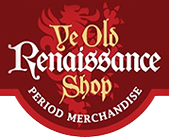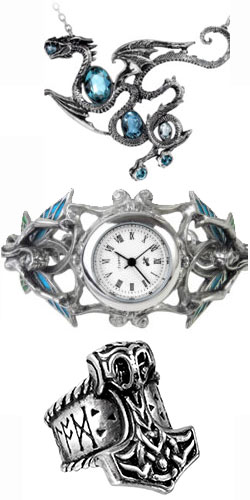How to Dress Renaissance
How to Shop for Renaissance Clothing
Choosing the right renaissance clothing for any occasion can seem overwhelming. With so many different options to choose from, finding the right one can pose a challenge for a novice. Whether preparing for a renaissance fair or medieval-themed party, here are a few tips to consider when you are ready to shop for renaissance attire.
Before you begin shopping you will need to decide what you want to be. Should you dress up as a traditional peasant, go all out as a spectacular knight, or something a little more adventurous like a pirate? An important factor when making your decision is to consider your personality. Choosing a medieval character that matches your personality will help you to pull the ensemble together more easily. After all, you may find it difficult to pose as someone with an audacious spirit if you are typically a shy person. Go for a character you feel most comfortable portraying.
Medieval Costume Options
There are several different options available in renaissance attire. Once you have decided what to dress as, use these guidelines to help you shop for renaissance outfits.
Peasant
If you have a modest personality and typically shy away from things that draw attention, a peasant may be the ideal choice. One of the key components to building your peasant costume is layering. A traditional peasant outfit consisted of multiple layers for both men and women. Peasant outfits were plain, sensible and undecorated. For the woman, her outfit might start with a chemise with bell-shaped sleeves and an underskirt or petticoat. Wear a skirt made of heavier fabric over the underskirt, followed by an apron and a bodice laced tightly over the blouse. For peasant men, wear a short tunic with a belt at the waist, atop shortened woolen trousers. Add a cowl or hooded cloak over the tunic, especially in cooler seasons.
Pirate
If you are an outgoing extrovert, a pirate outfit may be more for you. Pirate costumes generally consist of a laced up blouse, buccaneer pants and knee-high boots. A belt that is worn around the waist would be designed to carry a sword. A pirate man or woman may wear a vest or a coat, a sash, a hat or bandana or any combination thereof.
Knight
A daring soul with a heart of gold might find a valiant knight to be an appealing choice. A traditional knight would wear a protective chain-mail undergarment. This was heavy and comprised of fine chain that was woven together. A knight’s outerwear consisted of a full plate metal suit of armor. Knights wore helmets that covered the entire head. They carried a sword and shield that displayed his coat of arms. Some knights wore capes or loose jackets that were also adorned with their coat of arms.
Wench
Someone who loves to have fun and entertain would make a great wench. In medieval times, a wench was often a servant in a local tavern. A medieval wench costume is quite similar to that of a peasant but with more vibrant colors. Wench costumes typically consist of a puffy-sleeved blouse—usually worn off the shoulders—beneath a tightly laced corset. The skirt would consist of two pieces; a traditional peasant skirt underneath and an additional skirt on top that was often worn in a gathered fashion.
Knowing Where to Shop
A key factor when it comes to acquiring your costume is finding the right place to shop for renaissance clothing. You can likely find a pirate outfit easily at any novelty costume shop but it won’t any true mystique of the renaissance era. For a more genuine costume, you will want to shop from a renaissance store that understands the medieval time period.
P.S.- True medieval clothing didn’t contain glitter and sequins like the modern-day costumes found in Halloween or party supply stores! Gross!
What you really want is a renaissance store specializing in medieval attire sticks to the classic fashions that were typical of the time period (we’re just sayin’.) Regardless of which character you choose to portray, the important thing to have fun while you shop for renaissance attire!


